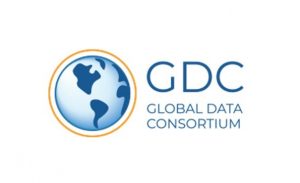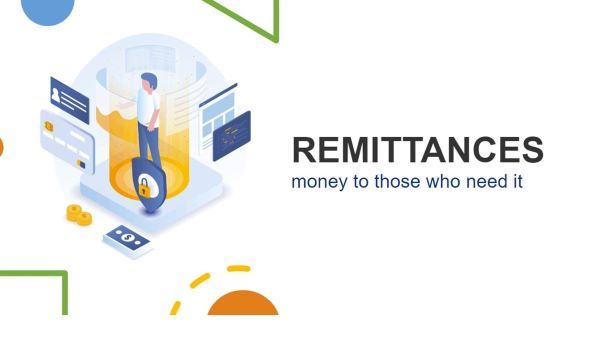By David Francis, Data Partner Manager, Global Data Consortium
 In our previous article, we discussed how remittance flows to South Asia continued despite the COVID pandemic and lockdowns. The same is true for the Middle East and North Africa and Sub-Saharan Africa, excluding Nigeria, despite World Bank predictions.
In our previous article, we discussed how remittance flows to South Asia continued despite the COVID pandemic and lockdowns. The same is true for the Middle East and North Africa and Sub-Saharan Africa, excluding Nigeria, despite World Bank predictions.
At the start of the pandemic, the World Bank estimated that remittance flows would plummet by 19.7% globally, largely due to a fall in the wages and employment of migrant workers during an economic crisis in the host country.
Remittance flows were expected to fall across all World Bank Group regions, most notably in Sub-Saharan Africa and Middle East and North Africa by 23.1% and 19.6% respectively, where remittances are a crucial financial lifeline for many vulnerable households. However, global remittances to low- and middle-income econom ies fell just 1.6% below the 2019 total of $548 billion, according to the World Bank’s latest Migration and Development Brief.
Additionally, inward remittance flows to the Middle East and North Africa and Sub-Saharan Africa were resilient.
“Covid-19 still devastates families around the world and remittances continue to provide a critical lifeline for the poor and vulnerable. Supportive policy responses, together with national social protection systems, should continue to be inclusive of all communities, including migrants,” says World Bank Social Protection and Jobs Global Practice director Michal Rutkowski.
“The relatively strong performance of remittance flows during the Covid-19 crisis has also highlighted the importance of the timely availability of data. Given its growing significance as a source of external financing for low- and middle-income countries, there is a need for better collection of data on remittances, in terms of frequency, timely reporting and granularity by corridor and channel,” the World Bank said.
Middle East and North Africa
Remittances to the Middle East and North African region were projected to fall by 19.6% to $47 billion in 2020, according to the World Bank.
The anticipated decline was likened to the global economic slowdown as well as the impact of lower oil prices in Gulf Cooperation Council countries. The World Bank said remittances from the euro area would also be impacted by the pre-COVID-19 economic slowdown and the depreciation of the euro against the U.S. dollar.
However, remittances by rose by 2.3% in the region to about $56 billion in 2020, according to the World Bank.
The growth is largely credited to strong remittance flows to Egypt and Morocco. Flows to Egypt increased 11% to a record high of nearly $30 billion in 2020, while flows to Morocco rose 6.5%. Tunisia also registered an increase of 2.5%.
Sub-Saharan Africa
Due to the COVID-19 crisis, the World Bank predicted remittance flows to Sub-Saharan Africa to decline by 23.1% to reach $37 billion in 2020.
The anticipated decline was attributed to various factors driven by the COVID outbreak in key destinations where African migrants reside including the EU region, the United States, the Middle East and China.
These big economies host a large share of Sub-Saharan African migrants, and combined they are a source of close to a quarter of total remittances sent to the region.
In addition to the pandemic’s impact, many countries in the Eastern African region were experiencing a severe outbreak of desert locusts attacking crops and threatening the food supply for many people.
Defying predictions, remittances to the region increased by 2.3%, excluding Nigeria, according to the World Bank.
Additional remittance growths were reported in Zambia (37%), Mozambique (16%), Kenya (9%) and Ghana (5%).
In 2021, remittance flows to the region are projected to rise by 2.6%, supported by improving prospects for growth in high-income countries.
Looking ahead
With global growth expected to rebound further in 2021 and 2022, remittance flows to low- and middle-income countries are expected to increase by 2.6% to $553 billion this year and by 2.2% to $565 billion in 2022, according to World Bank estimations.
About: Global Data Consortium is a data-as-a-service company that delivers real-time, locally sourced identity and business verification for financial institutions, age restricted services, ecommerce, regtechs, and more around the globe. From swift customer and business identification for online account opening to identity verification for global money transfer to verifying ages for online gaming and age-restricted commerce, our local data providers reach deep into their markets to find unexpected sources of identity information, confirming anyone from thin-file  clients to prominent persons of interest. Beyond the product itself, our Consortium of data providers, channel partners, and customers supply a continuous flow of knowledge and meaningful connection.
clients to prominent persons of interest. Beyond the product itself, our Consortium of data providers, channel partners, and customers supply a continuous flow of knowledge and meaningful connection.
Source: Global Data Consortium


























